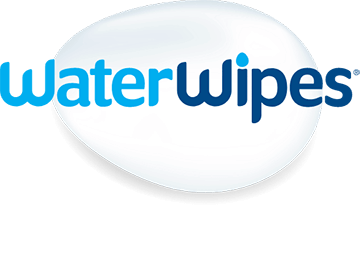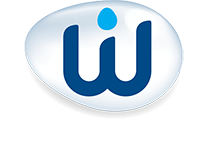WaterWipes: Just two ingredients
WaterWipes provide gentle cleansing for the most delicate newborn skin and can even be used on premature babies.
WaterWipes are made from 99.9% high purity water and a drop of fruit extract. They have been validated by the Skin Health Alliance as purer than cotton wool and water, helping maintain the important skin barrier function of the stratum corneum, while offering the convenience of a wipe.
The water used within WaterWipes is what makes the product unique. The water passes through a seven-step purification process that uses a series of filters to remove impurities, soften and purify the water. This purifying process makes the water significantly purer than cooled boiled water and produces a unique product that effectively cleanses the skin, without the need for several additional cleansing ingredients.
WaterWipes are also 100% biodegradable* and home compostable wipes so are an ideal choice for parents and healthcare professionals who don’t want to compromise between protecting the integrity of infant skin and protecting the planet.
We recommend that HCPs are aware of the ingredients contained in baby wipe products being used on the delicate skin of babies
Why is a pure and gentle wipe with minimal ingredients so important for babies' skin?
The unique properties of baby and infant skin
The skin is the body’s largest organ and has three primary functions: protection, regulation and sensation. It consists of three main layers – the epidermis, dermis and subcutaneous fatty tissue.
The epidermis is further divided into the stratum corneum, stratum lucidum, stratum granulosum, stratum spinosum, and stratum basale. The stratum corneum is the outermost layer and acts as a protective barrier against microorganisms, chemicals and allergens. Significant clinical evidence stresses the importance of the stratum corneum and its barrier function for babies, especially neonates.1
The epidermis in babies is 20% thinner and the stratum corneum is 30% thinner,2 which increases susceptibility to permeability and dryness.3 From birth, barrier function and the water handling properties of the stratum corneum are continually optimising and the properties that make infant skin unique are thought to persist at least through the first 12 months of life.1 Baby skin is also less firmly attached than mature skin and has a higher propensity to increased trans-epidermal water loss and reduced stratum corneum hydration, reflecting a less effective skin barrier function.3,4,5
Also because the ratio between baby body surface to baby body weight is higher, topical agents are more readily absorbed and can therefore have a more pronounced effect on baby skin.3 All these factors combine to make neonate and infant skin a less effective barrier and as a result it is far more delicate and vulnerable, requiring special care and protection.
It is therefore important to select the correct types of products and ingredients for use on the skin of babies to help prevent nappy rash, minimize skin conditions such as eczema, and preserve the skin barrier function. The National Institute for Health and Care Excellence (NICE) Guidelines also note that medicated wipes should not be used.6
Understanding common wipe ingredients
It is recommended that topical agents used for cleansing babies should not adversely alter or affect the protective skin barrier. When choosing products for infant and newborn skin, it is recommended that pH neutral products are chosen, products containing only mild preservatives, that are fragrance-free, alcohol-free and soap-free. Fragrances and preservatives are the two most clinically relevant allergens found in personal care products. All cosmetic and personal care products must include a list of ingredients, and this is a legal requirement.
Consumers are increasingly demanding products with minimal ingredients. However, even in wipes considered ‘pure’ or ‘natural’ the average number of ingredients start at seven.
The diagram below outlines a list of ingredients often found in other baby wipes. When different ingredients are present, often emulsifying agents are needed to allow the ingredients to mix together evenly. A buffer may be required to maintain the pH levels and sometimes a thickening agent to ensure the solution is the right viscosity. For these reasons, it is difficult to create a formulation that has minimal ingredients, but WaterWipes have created a unique and pure formulation that has done just this with two ingredients.
What makes WaterWipes different to other baby wipes?
WaterWipes are made from 99.9% high purity water and a drop of Fruit Extract.
The Fruit Extract has naturally occurring antimicrobial properties, and acts as a gentle skin conditioner. WaterWipes are soap and fragrance free to help reduce the risk of drying out the skin and the potential development of contact dermatitis.
Several clinical studies, overseen by dermatologists, have been commissioned which demonstrate that WaterWipes have good skin compatibility, are non-irritating and non-sensitising.7
Furthermore, WaterWipes also have numerous global accreditations, sponsorships, endorsements and registrations, including:

